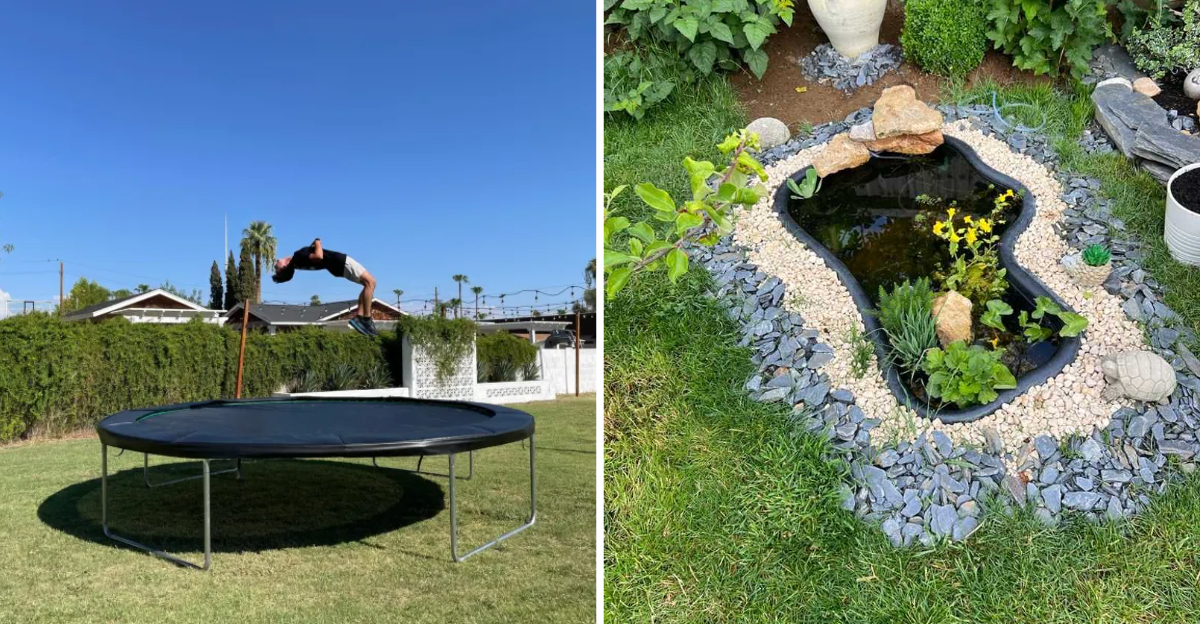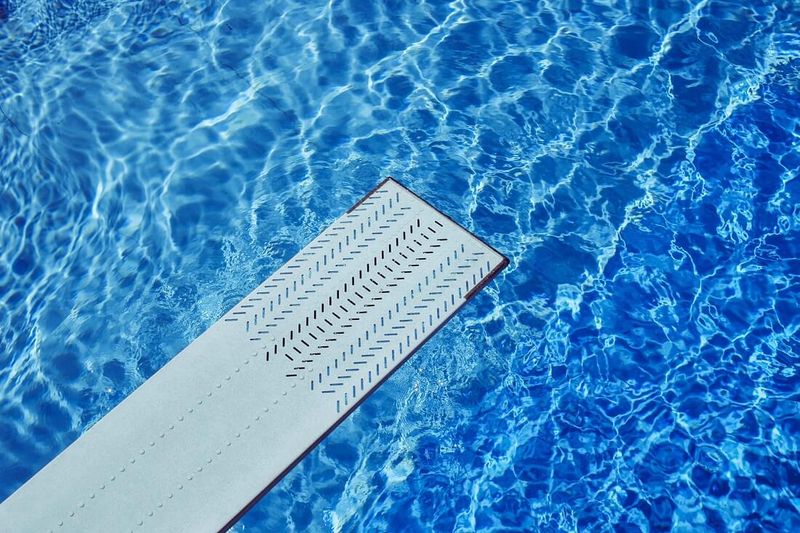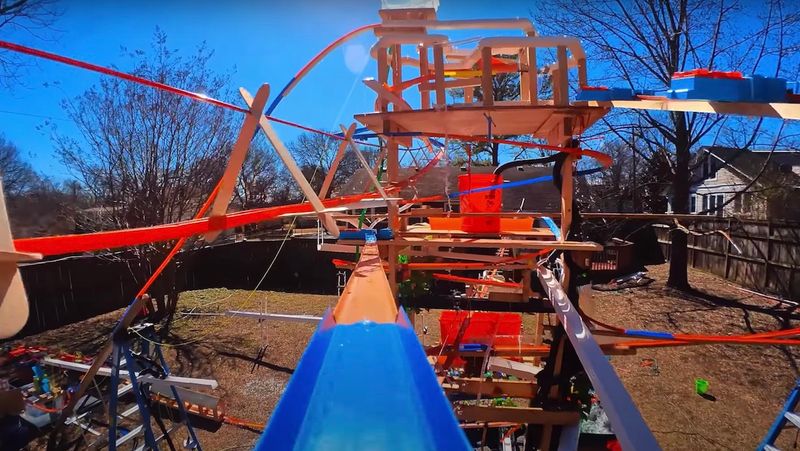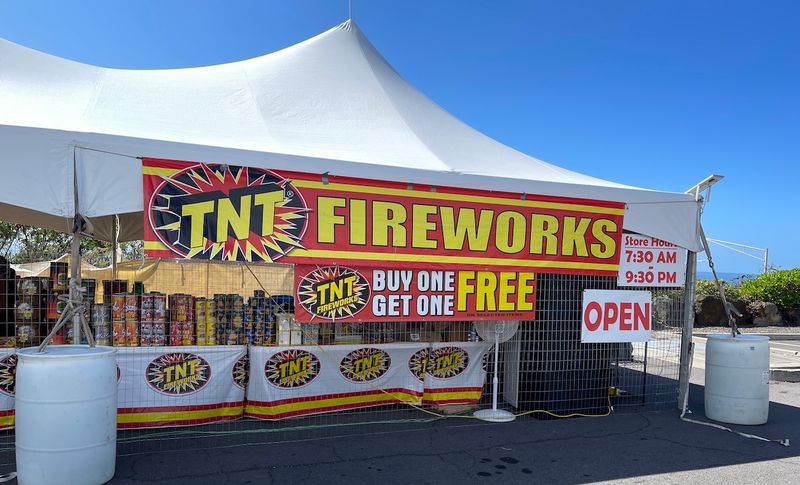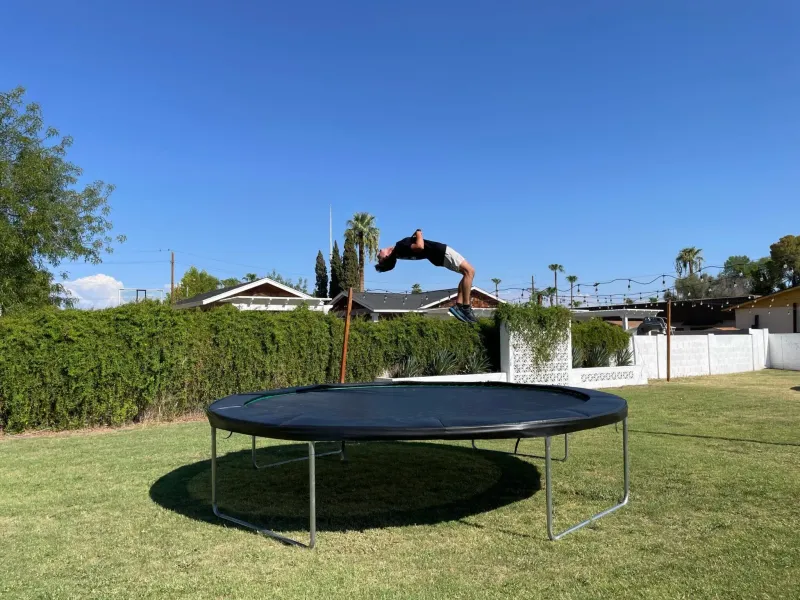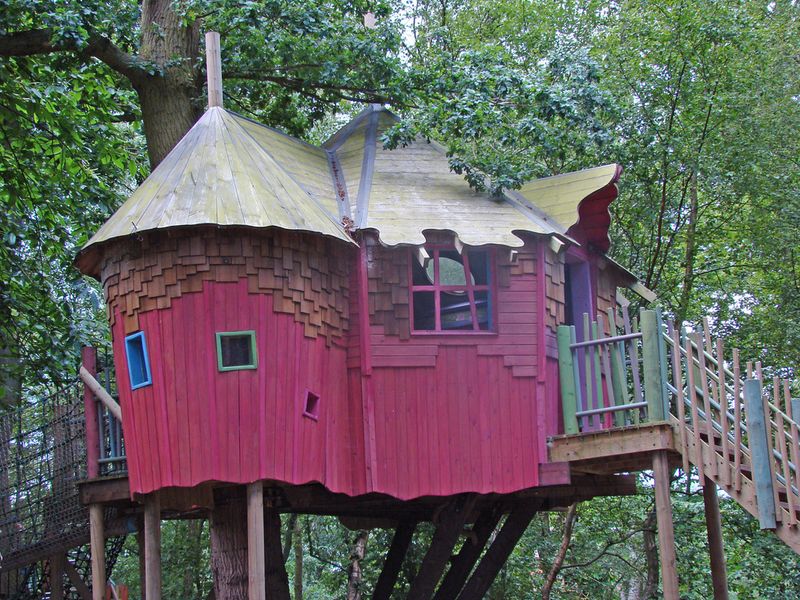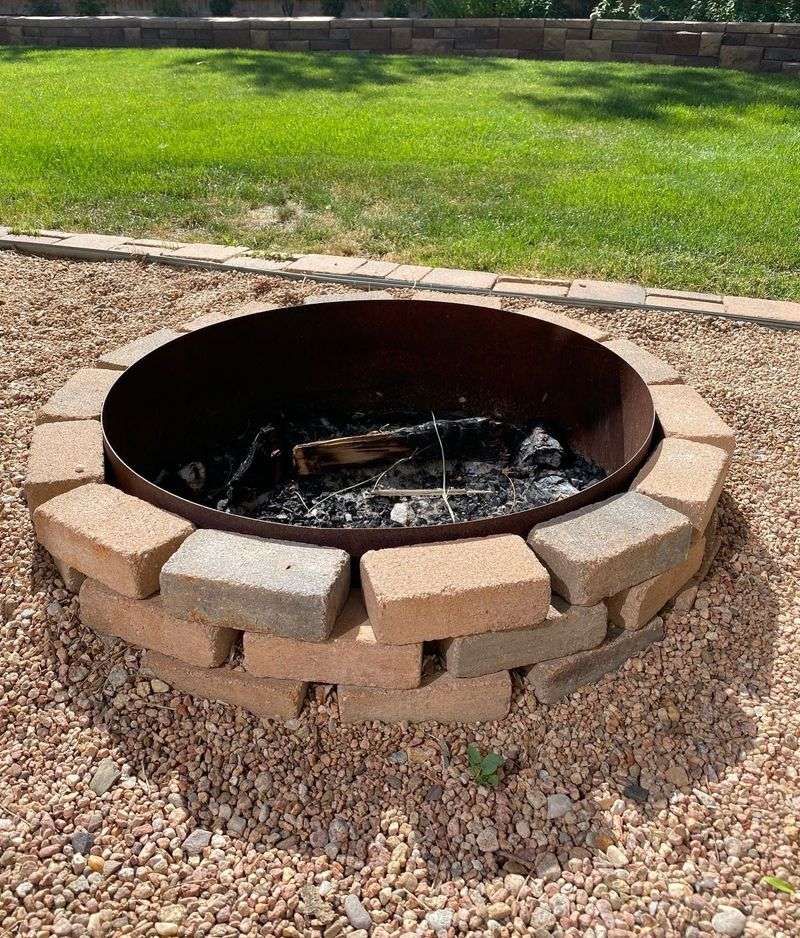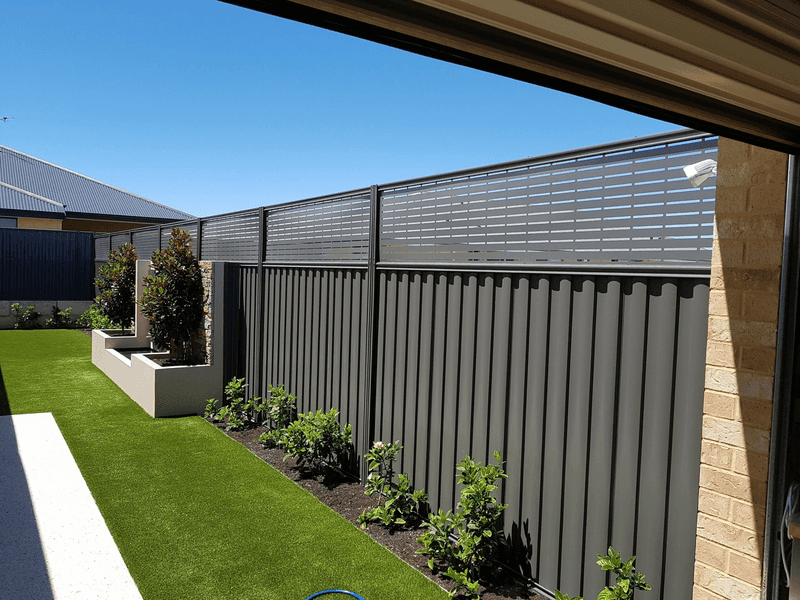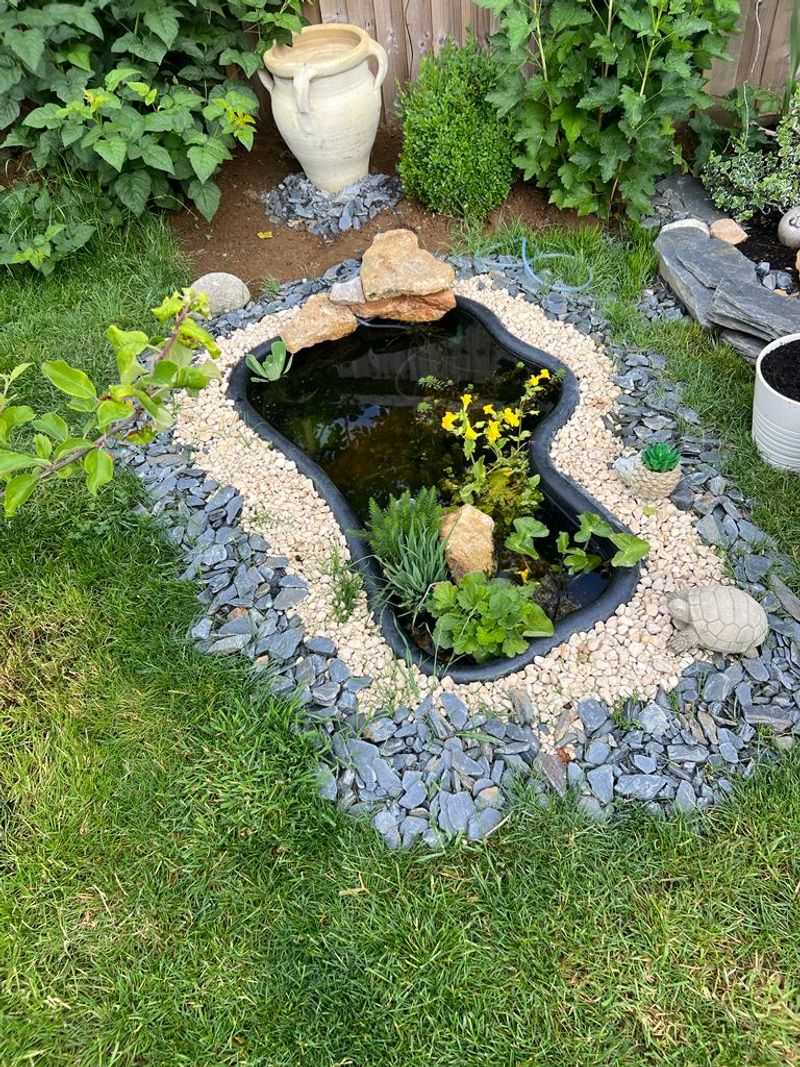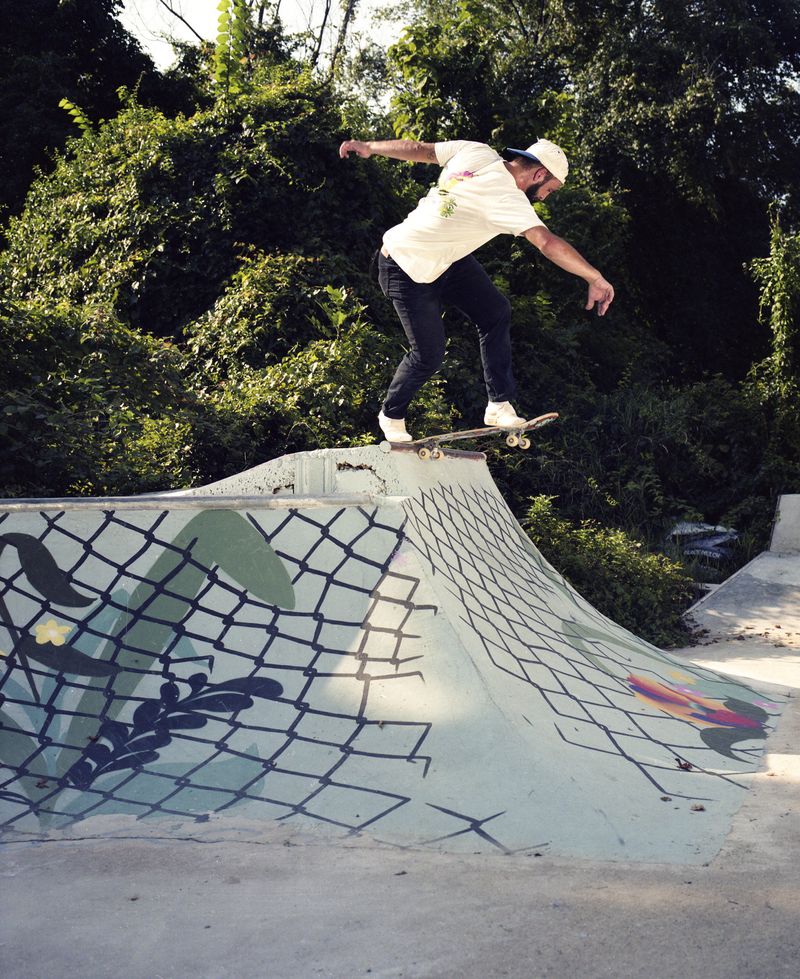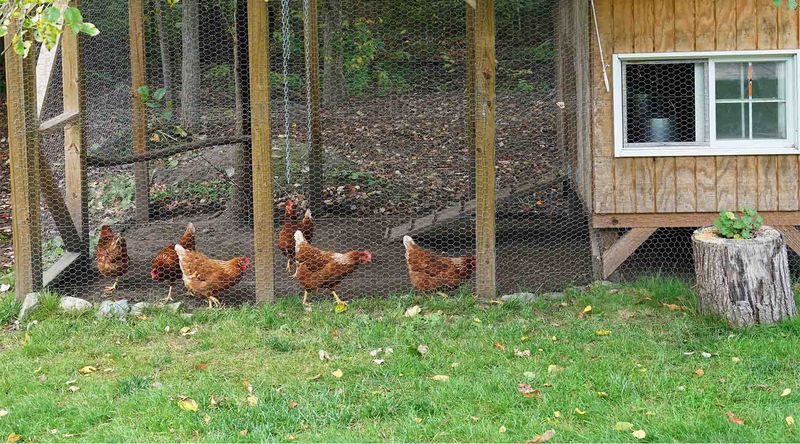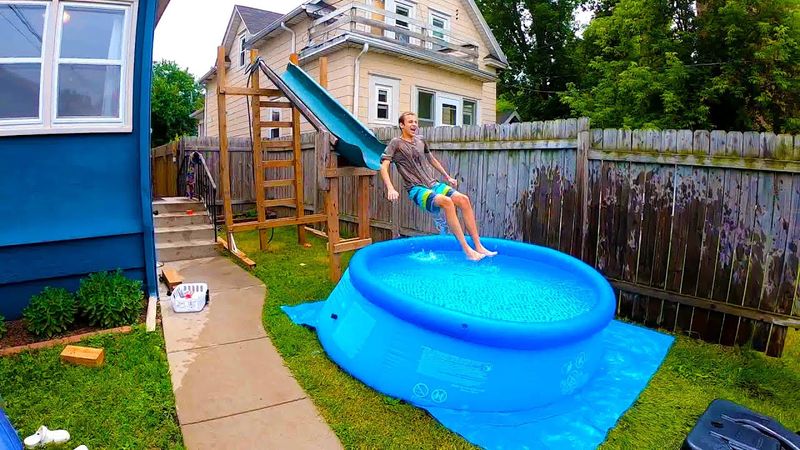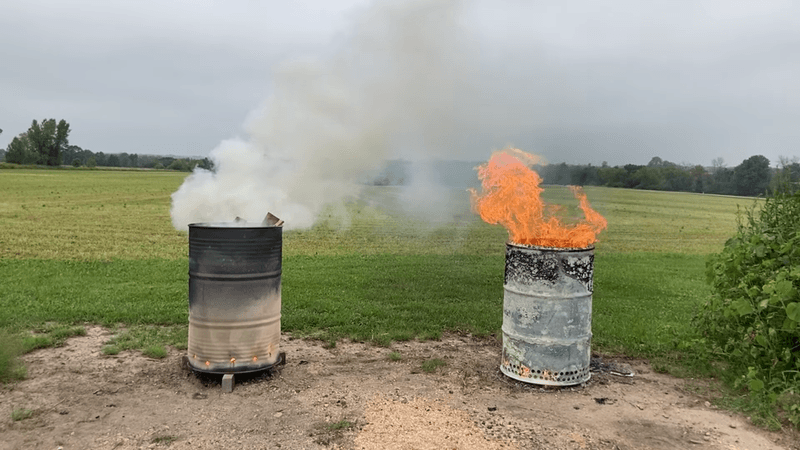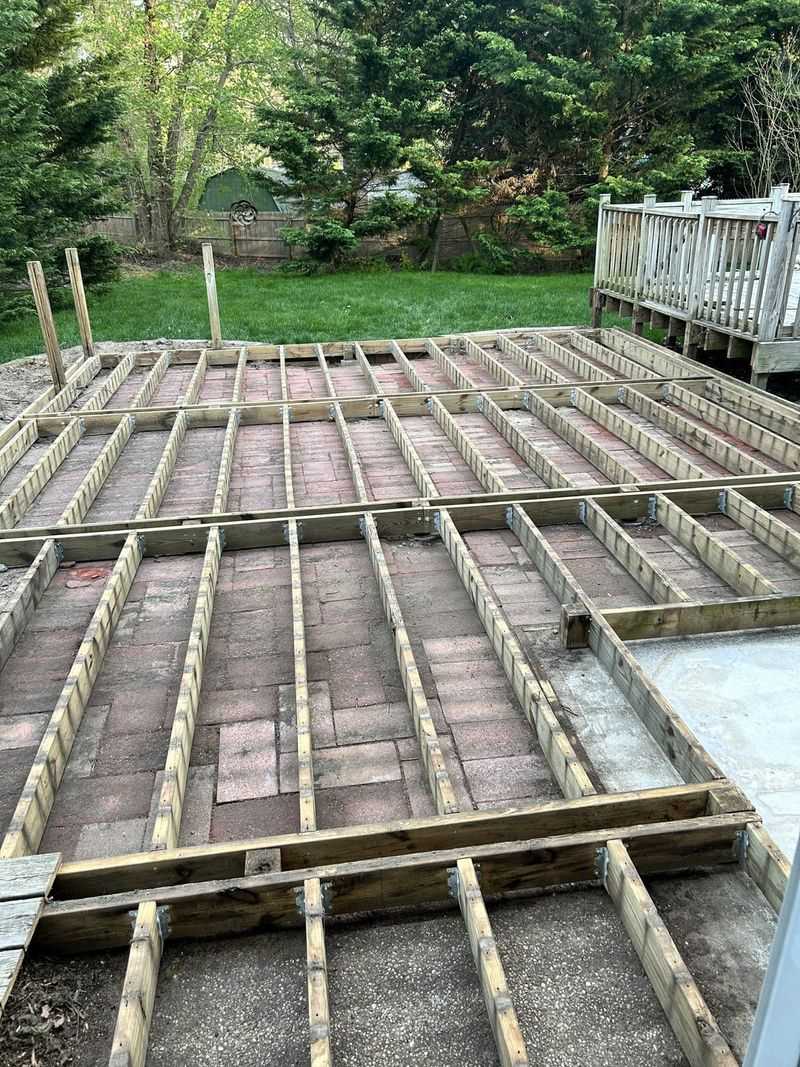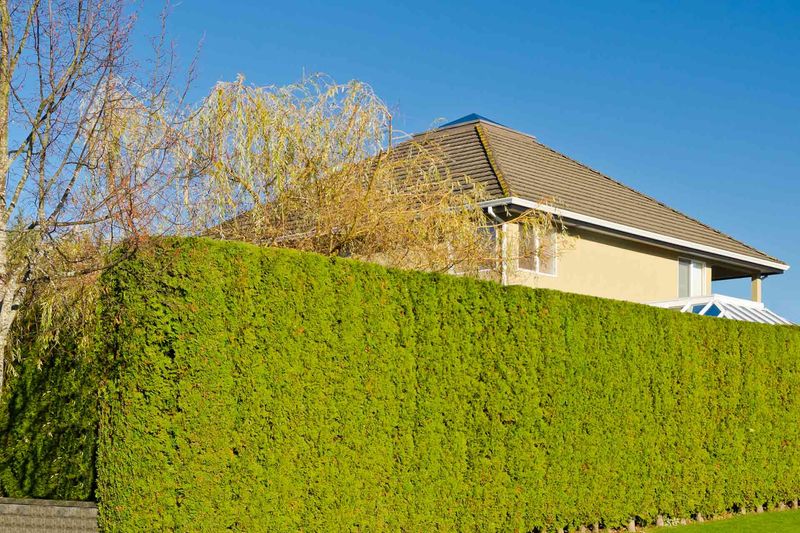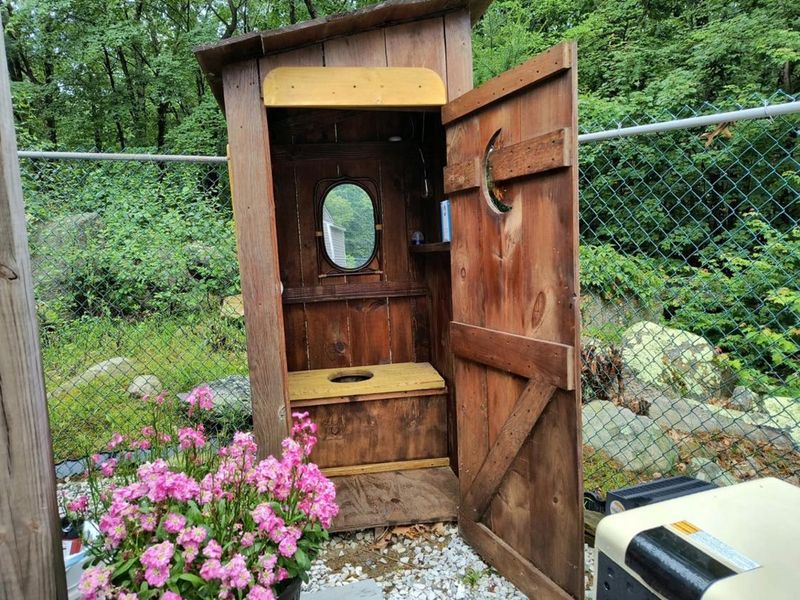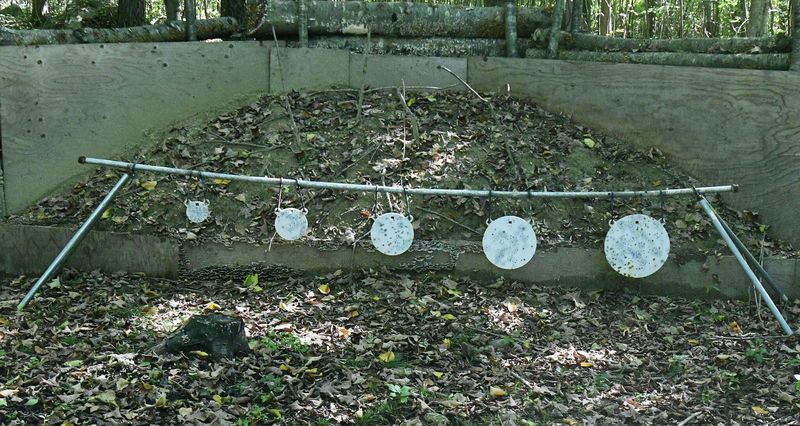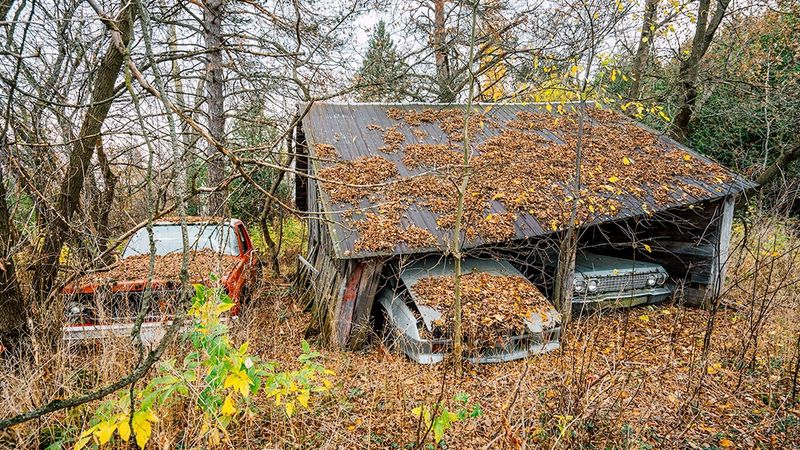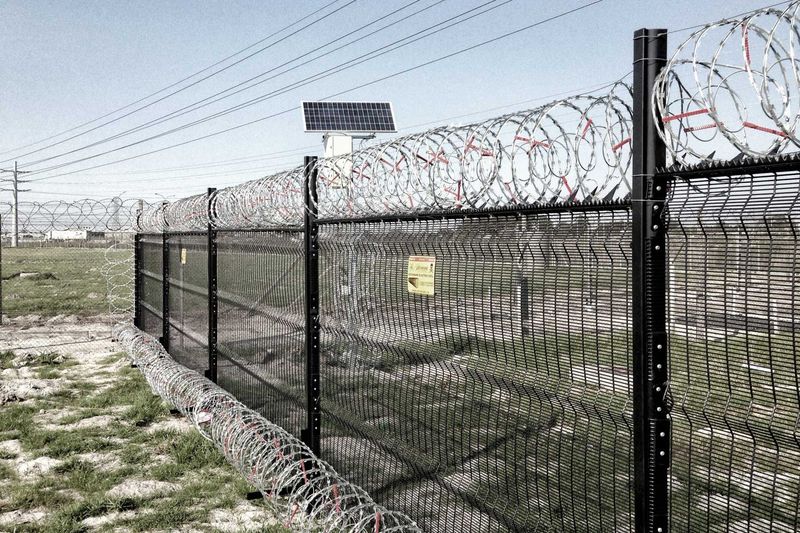Explore the transformation of backyard landscapes with these 20 features that were once the epitome of cool but are now relegated to the annals of history due to changing laws and safety concerns. From diving boards that echoed with the laughter of summers past to the once-thrilling homemade zip lines, each entry tells a story of evolving regulations and shifting priorities. Understand the reasons behind these bans and discover how safety, environmental, and societal norms have reshaped the quintessential backyard experience.
1. Old-School Diving Boards
The diving board was once the crown jewel of backyard pools, a spring-loaded platform for high-flying fun. While it added glamour to any poolside, safety took a backseat. Accidents and insurance liabilities soon overshadowed the thrill.
Nowadays, many jurisdictions have restricted or outright banned them unless they meet specific safety standards, urging the replacement with lower or no boards.
Homeowners now prioritize safe swimming environments, even if it means compromising on the classic poolside look. The shift reflects a broader trend towards safety-first recreational spaces in our homes.
2. DIY Backyard Zip Lines
Backyard zip lines once turned simple yards into adventure zones, offering a thrilling ride just steps from the backdoor. However, safety concerns have clipped their wings. Many local laws now require special permits and professional installation, citing potential injuries.
The need for certified inspections has made DIY setups nearly impossible. Enthusiasts must adapt by opting for commercial options or supervised adventure parks. This regulation echoes a wider movement towards regulated adventure sports, ensuring safety without killing the spirit of adventure for thrill-seekers.
3. Homemade Fireworks Launch Pads
Launching fireworks from your backyard was once an explosive way to celebrate holidays. Yet, what was once a festive tradition has now been doused by fire safety and noise complaints.
Many areas have banned personal fireworks displays, imposing hefty fines on violators. The change aims to reduce fire risks and protect community peace.
Enthusiasts can still enjoy public displays or use safer, non-pyrotechnic alternatives at home. This shift reflects a broader societal focus on safety and community well-being, ensuring festivities don’t come at a cost.
4. Trampolines Without Safety Enclosures
The trampoline, a nostalgic symbol of childhood fun, once stood unguarded in backyards. Today, the bare-bones trampoline is rare, thanks to safety enclosures becoming standard.
Municipalities mandate nets to prevent accidents, and insurance companies often require compliance for coverage.
These regulations aim to keep the bouncing joy safe and secure. Parents now invest in safety features to protect their children while preserving the trampoline’s fun essence. This development is part of a larger trend prioritizing child safety in recreational equipment and backyard play areas.
5. Non-Compliant Treehouses
The treehouse, a classic childhood retreat, often defied safety norms with its whimsical construction. Modern codes now treat large treehouses as proper structures, demanding permits and inspections.
This requires homeowners to ensure their treehouses meet strict safety standards.
The romantic hideouts of yesteryears are being replaced by safer, code-compliant versions, ensuring the fun without the risk. This evolution aligns with broader trends in residential safety and responsible construction, embracing childhood imagination within secure confines.
6. Deep Pit BBQs
Deep pit BBQs offered a traditional way to cook, invoking the rich flavors of southern hospitality. However, these open flames are now often prohibited by fire codes due to safety concerns.
Regulations dictate their distance from property lines and require adequate ventilation. Recent changes emphasize safe cooking practices, nudging enthusiasts towards surface grills or professionally installed pits. This reflects a broader commitment to fire safety and environmental standards, transforming how we enjoy outdoor culinary traditions.
7. High Privacy Fences (Over Legal Limits)
Once a means to shield your personal paradise, overly high fences now face legal barriers. Many residential areas cap fence height to maintain neighborhood aesthetics and ensure safety.
These rules prevent creating fortress-like yards, promoting openness while maintaining privacy. Property owners must now navigate these limits, often opting for creative landscaping solutions. The regulation underscores a balance between personal privacy and community interests, fostering harmonious living environments.
8. Natural Swimming Ponds with Certain Fish
Backyard ponds with exotic fish were once a hallmark of natural beauty. Today, many regions restrict non-native species due to ecological risks.
These regulations aim to protect local ecosystems from invasive threats. Homeowners must now focus on compliant, native species, ensuring ecological balance. This shift highlights a growing awareness of environmental responsibility, encouraging sustainable landscaping practices.
9. Homemade Skate Ramps
Homemade skate ramps once turned backyards into local skate parks, embodying youthful rebellion. Noise complaints and safety concerns have since led to widespread restrictions.
Cities now demand permits for ramps, with many opting for community skate parks instead. This change reflects a societal shift towards safer, more controlled environments for sport, balancing freedom with regulation.
10. Chicken Coops in Urban Zones
Chicken coops brought the farm-to-table experience to urban areas, offering fresh eggs at home. Yet, zoning laws in many metro areas now forbid them due to noise and odor concerns.
Residents must adhere to strict rules or turn to community gardens for sustainable living. This regulation reflects an urban shift towards balancing local agriculture with community standards, promoting harmony between urban living and sustainable practices.
11. Homemade Zip Pools (a.k.a. Large DIY Inflatable Pools)
Giant inflatable pools transformed backyards into summer havens. However, many towns now require fences around pools deeper than specific depths for safety.
Failure to comply can render these fun features illegal. Homeowners must adapt by installing compliant barriers or choosing smaller, shallow pools. This trend underscores a growing focus on water safety and responsible enjoyment of aquatic spaces in residential areas.
12. Burn Barrels or Incinerators
Burn barrels once offered an old-fashioned way to dispose of waste, but they now conflict with modern environmental standards. Air pollution laws have led to bans in many areas, prioritizing cleaner disposal methods.
Homeowners are encouraged to use public disposal services or composting alternatives. This reflects a societal commitment to reducing air pollution and adopting sustainable waste management practices.
13. Arsenic-Treated Wood Structures
Arsenic-treated wood was once the go-to for durable outdoor structures. Today, health and environmental concerns have phased out its use.
Regulations now prefer safer alternatives like ACQ-treated wood, promoting healthier living spaces. This shift encourages builders and homeowners to adopt eco-friendly materials, reflecting a broader movement towards sustainable construction practices in residential settings.
14. Hedge Mazes or Overgrown Hedges
Hedge mazes added a whimsical touch to backyards, but many areas now regulate their height and density. These rules aim to prevent visibility hazards for neighbors and emergency services.
Homeowners must trim or reshape their greenery to comply, finding creative ways to maintain aesthetics. This regulation aligns with a trend towards ensuring safety and visibility in residential landscapes, balancing beauty with practicality.
15. Illegal Exotic Pet Enclosures
Exotic pets once adorned backyards, but stricter wildlife laws now curb this trend. These regulations protect both the animals and the community from potential dangers.
Owners must obtain special permits, often opting for more common pets. This reflects a shift towards responsible pet ownership and environmental stewardship, ensuring harmony between humans and wildlife.
16. Old-Fashioned Outhouses
Outhouses, relics of rural living, have been phased out by modern sanitation standards. Current codes demand indoor plumbing and septic solutions, prioritizing hygiene and convenience.
Homeowners now invest in updated facilities, ensuring compliance with health regulations. This evolution highlights a societal commitment to modern infrastructure, enhancing quality of life while preserving nostalgia through alternative means.
17. DIY Shooting Ranges
Backyard shooting ranges offered convenience for firearm enthusiasts, but increased residential density has led to restrictions. Many zones now ban discharging firearms, citing safety and noise concerns.
Enthusiasts must now frequent professional ranges, aligning with a broader push for controlled environments. This ensures safety for both participants and nearby residents, fostering responsible recreational practices.
18. Backyard Car Graveyards
Storing old cars for parts once made sense, but environmental and aesthetic concerns have turned them into eyesores. Most cities now ban such graveyards, urging proper disposal or restoration.
Owners must clear their yards, prioritizing clean and appealing environments. This trend underscores a commitment to urban beautification and environmental responsibility, promoting tidy, sustainable living spaces.
19. Excessively Bright Security Lighting
Bright security lights provided peace of mind, but light pollution ordinances now dim their shine. Modern rules limit brightness to protect neighbors and wildlife.
Homeowners turn to smart, directed lighting solutions, balancing security with community well-being. This regulation highlights a shift towards considerate living, ensuring safe neighborhoods that respect the natural environment.
20. Barbed Wire & Electric Perimeter Fences
Barbed wire fences once symbolized security, yet residential areas now deem them hazardous. Special permits are rare, urging alternatives like hedges or standard fences.
This reflects a transition towards safer, aesthetically pleasing boundaries, prioritizing harmonious neighborhood aesthetics. Homeowners adapt by embracing less aggressive security measures, fostering a community-centered approach to property protection.
